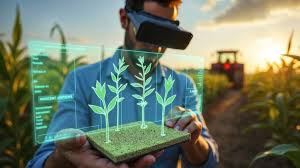In a world where technology is evolving at lightning speed, new innovations continue to reshape our daily lives. One such advancement that has garnered attention is lidarmos. But what exactly is it? This term may sound unfamiliar, yet its implications could be profound across various industries. From enhancing autonomous vehicles to revolutionizing mapping technologies, lidarmos offers an exciting glimpse into the future of precision and efficiency.
ad
As we delve deeper into this fascinating topic, you’ll discover how lidarmos originated and evolved over time, how it operates in practice, and the myriad applications that are already making waves today. Get ready to explore the advantages and challenges of this cutting-edge technology while looking ahead to its promising future!
The Origin and Evolution of Lidarmos
Lidarmos traces its roots back to early advancements in sensor technology. Initially, the concept emerged from the need for enhanced environmental monitoring and data collection.
As technology progressed, so did the capabilities of lidarmos systems. Innovators refined laser-based methods to improve accuracy and efficiency. This evolution opened doors to various fields including agriculture, urban planning, and even autonomous vehicles.
With each iteration, lidarmos became more compact and user-friendly. The integration of machine learning algorithms allowed for real-time data processing. This significant leap increased its applicability across diverse industries.
Today’s lidarmos units are versatile tools that provide precise measurements in challenging environments. Their ability to create detailed 3D maps continues to push boundaries in research and development globally.
How Does Lidarmos Work?
Lidarmos technology operates on a fascinating principle of real-time data processing and interaction. It utilizes advanced algorithms to analyze user inputs and environmental factors simultaneously.
When you engage with Lidarmos, it captures multiple data points instantaneously. This includes spatial recognition through laser scanning, which helps in mapping out the surroundings in detail.
The system then interprets this information using machine learning techniques. By continuously refining its understanding, Lidarmos can adapt to new situations and improve its performance over time.
Its integration with other technologies enhances functionality too. For example, pairing with IoT devices allows for seamless communication across platforms.
This dynamic interplay between hardware and software makes Lidarmos not just efficient but also versatile across various applications. The intricacies of how it functions showcase the brilliance behind modern technological advancements.
Applications of Lidarmos Technology
Lidarmos technology finds its way into various sectors, transforming how we approach complex challenges. In environmental monitoring, it provides precise topographical data essential for assessing ecosystems and managing natural resources.
Urban planning benefits greatly from lidarmos by allowing city planners to visualize terrain changes accurately. This capability fosters improved infrastructure development while minimizing ecological impact.
In the field of agriculture, farmers utilize lidarmos for crop mapping and health assessments. The technology enables them to make informed decisions on irrigation and fertilizer use, ultimately enhancing yield.
Moreover, in disaster management scenarios, lidarmos assists first responders by offering real-time spatial data during emergencies like floods or wildfires. This timely information can be crucial in saving lives and resources.
Even autonomous vehicles are tapping into lidarmos tech to navigate terrains safely. It enhances their ability to detect obstacles and understand road conditions more efficiently than traditional systems.
Advantages and Disadvantages of Using Lidarmos
Lidarmos offers several advantages that make it appealing for various industries. Its precision in data collection is unmatched, allowing users to gather accurate information quickly. This efficiency can lead to significant time savings and reduced operational costs.
However, there are disadvantages to consider as well. The technology can be costly upfront, which may pose a barrier for small businesses or startups. Additionally, the complexity of lidarmos systems requires specialized training for users.
Integration with existing systems may also challenge organizations looking to adopt this technology seamlessly. Depending on the application, there could be issues related to data privacy and security that warrant careful attention before implementation.
Despite these hurdles, many find the benefits of lidarmos far outweigh its drawbacks when used appropriately within their operations.
Future Developments in Lidarmos Technology
The future of lidarmos technology is incredibly promising, with numerous advancements on the horizon. Researchers are focusing on improving sensor accuracy and range, paving the way for applications in various industries.
As artificial intelligence continues to evolve, integrating AI algorithms into lidarmos systems will enhance data processing capabilities. This means real-time analysis could become more precise and efficient.
Moreover, miniaturization is a key trend. Smaller, lighter devices will make it easier to incorporate lidarmos into everyday products like smartphones and drones.
Sustainability also plays a role in upcoming developments. Innovators aim to create energy-efficient models that consume less power while maintaining performance levels.
Enhanced connectivity through 5G networks may facilitate cloud-based processing for lidar data. This shift could revolutionize how businesses leverage information captured by these advanced sensors.
Conclusion
Lidarmos represents a fascinating intersection of technology and functionality. Its origins trace back to the need for more efficient data processing and management systems, which have evolved significantly over time. As lidarmos continues to develop, we see it influencing various industries in remarkable ways.
This technology works through advanced algorithms that streamline processes and enhance user experiences. Applications range from healthcare to finance, showcasing its versatility. While there are clear advantages like improved efficiency and accuracy, some disadvantages cannot be overlooked—such as potential security risks or implementation costs.
Looking ahead, innovations within lidarmos technology promise even greater capabilities. As it becomes further integrated into our daily lives, staying informed about its developments is crucial for both individuals and businesses alike.
Engaging with this evolving landscape will undoubtedly shape how we interact with technology in the future; it’s an exciting journey worth watching closely.




